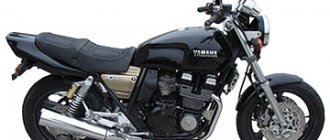It would seem that you want to make a comparison of two-stroke 125-k, so go ahead and do it.
We take an Italian motorcycle, an Austrian motorcycle, a Swedish (but made in Austria) and a Spanish (and also made in Austria) motorcycle. It sounds funny, but let’s honestly check whether there is a difference between the three Austrians, or whether this is all a remake of the same model.
GasGas TM Yamaha KTM Husqvarna
Cross 125s
There was a time when two-stroke 125s were on the verge of extinction. They were replaced by four-stroke 250s, in particular due to the new AMA rules, according to which they were simply equated - two-stroke 125s competed with four-stroke 250s. Adding fuel to the fire (pardon the pun) was the ban on leaded gasoline, which was used by two-strokes with a high compression ratio. But fortunately, this technology is so charismatic that even in an era of strict environmental requirements, there are enthusiasts who drive it - and enthusiasts who produce it. Now the market for modern, powerful, controllable and relatively environmentally friendly two-stroke bikes is already experiencing quite a rebirth, and it’s time to find out who is worth what among the current models.
Special respect to Yamaha for not leaving this market when three other representatives of the Japanese four left it. Even more respect goes to Stefan Pira, the head of KTM, for not only continuing to make two-strokes, but also seriously developing them, introducing new technologies and leaving a foundation for the future (which, according to KTM, two-stroke motorcycles clearly have). Anyone will make and sell motorcycles when they sell like hotcakes, but in a period of decline, maintaining a two-stroke line is expensive.
The current flourishing of two-stroke technology is not so much a market curiosity as a completely logical process. The fact is that these engines have a very special, groovy character, which was almost forgotten when large and harsh four-stroke models with an injection power system began to appear. Yes, the injector is an excellent reason to abandon carb technology once and for all, and the need to add oil to gasoline seemed to obviously put an end to injectors for the 2T. But this, of course, turned out not to be the case.
Now they are being raced again by both beginners and enthusiasts, as well as professional riders. They race because the winners of the competition receive cash prizes. They race because a professional should not stagnate in one topic, and a true enthusiast is almost a professional in character. They race because 125s are easy for beginners (sometimes deceptively easy).
American races like the Wiseco World Two-Stroke Championship, 125 All-Star, Red Bull Straight Rhythm two-stroke, Washougal 125 Dream Race and SoCal's Pasha 125 Open are exciting and fun. And in Europe, the EMX125 racing series successfully precedes the MXGP 250 World Championship.










